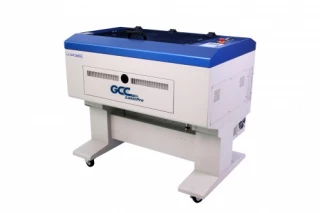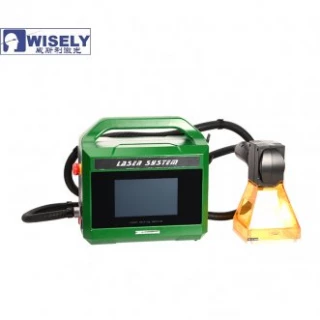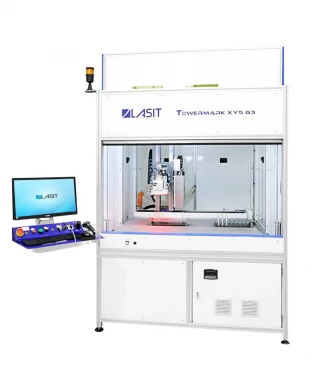Laser Engravers
Frequently Asked Questions
What types of lasers are used in laser engravers?
Different types of lasers are used in laser engravers including fiber lasers, UV lasers, CO2 lasers, and YAG lasers. Each of these laser sources offers unique advantages: CO2 lasers offer mature technology and relatively low cost per Watt of power. However they are bulkier than DPSS and Fiber lasers and might require maintenance after some time. DPSS and Fiber Lasers have evolved to the point where they offer superior beam quality in both CW and pulsed modes and high quality, near TEM00 beam profile. The latter translates to narrow beam waists at focal spot and precision in marking. Before purchasing a laser system you will want to carefully examine your needs, budget and juxtapose those against laser characteristics to arrive at a wholesome decision.
What is the difference between laser engraving and laser etching?
Laser etching and engraving are both material removal techniques that rely on heating a localized spot of the material, but they operate at different temperature levels and create dips or cavities of different depths. In laser etching, the material is removed by melting while in laser engraving the material is removed by vaporization. Additionally, the cavities created by laser engraving techniques tend to be deeper than those created by etching.
How deep can a pattern created by a laser engraver be?
Typically the patterns are a few hundred micrometers deep, but they can be larger under high power and certain engraving conditions.
Are lasers used for engraving pulsed or continuous?
Most laser engravers utilize pulsed lasers. Pulsed lasers possess the high peak powers necessary for the removal of the materials. That said, CW lasers can also create laser marks on metals and on glass using laser marking inks.
What are the key advantages of using laser engraving?
Laser engraving is a precise material processing technique that offers efficiency, accuracy and processing speed. Many laser engravers are versatile and allow switching between laser cutting, laser marking and laser engraving modes by simple change of laser settings. While laser engravers require relatively large upfront investments they are low in maintenance and require no consumable (except when used with laser marking inks).
Are there materials that cannot be engraved?
Yes, some materials such as PVCs and halogens are not suitable for laser engraving. However, it might be possible to laser mark these materials using laser marking inks.
What is the lifespan of a laser engraver?
Laser engravers can stay in operation for many years (often 10+) before requiring maintenance. The key components of the laser engraver that deteriorate over time are the laser head which might deteriorate in performance (power, beam quality, etc.) and laser beam steering opto-mechanics that can become less precise or malfunction.
Do laser engravers need to be cooled?
If a high-power laser is used, a cooling system needs to be used to protect the laser. Nowadays, most laser engravers have built in ventilation systems.
FindLight's laser engravers category offers a wide selection of high-quality and precise laser engraving machines for industrial and commercial material processing applications. These laser engravers can be used for various materials, including metals, plastics, ceramics, and more. They are designed to provide high-quality, accurate, and efficient engraving solutions for a variety of industrial and commercial applications. With FindLight's easy-to-use interface and excellent customer support, you can find the perfect laser engraver to meet your specific material processing needs.


